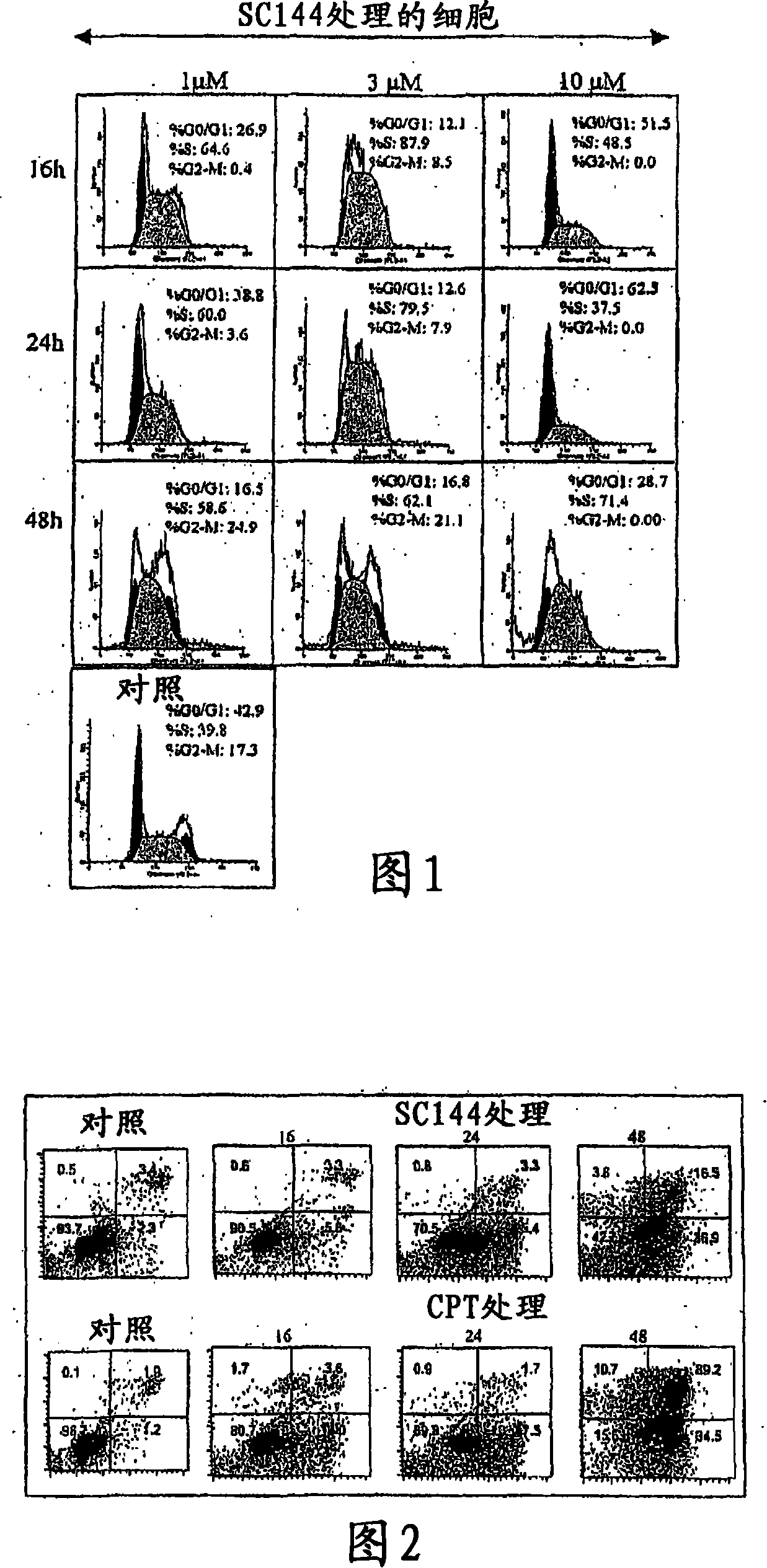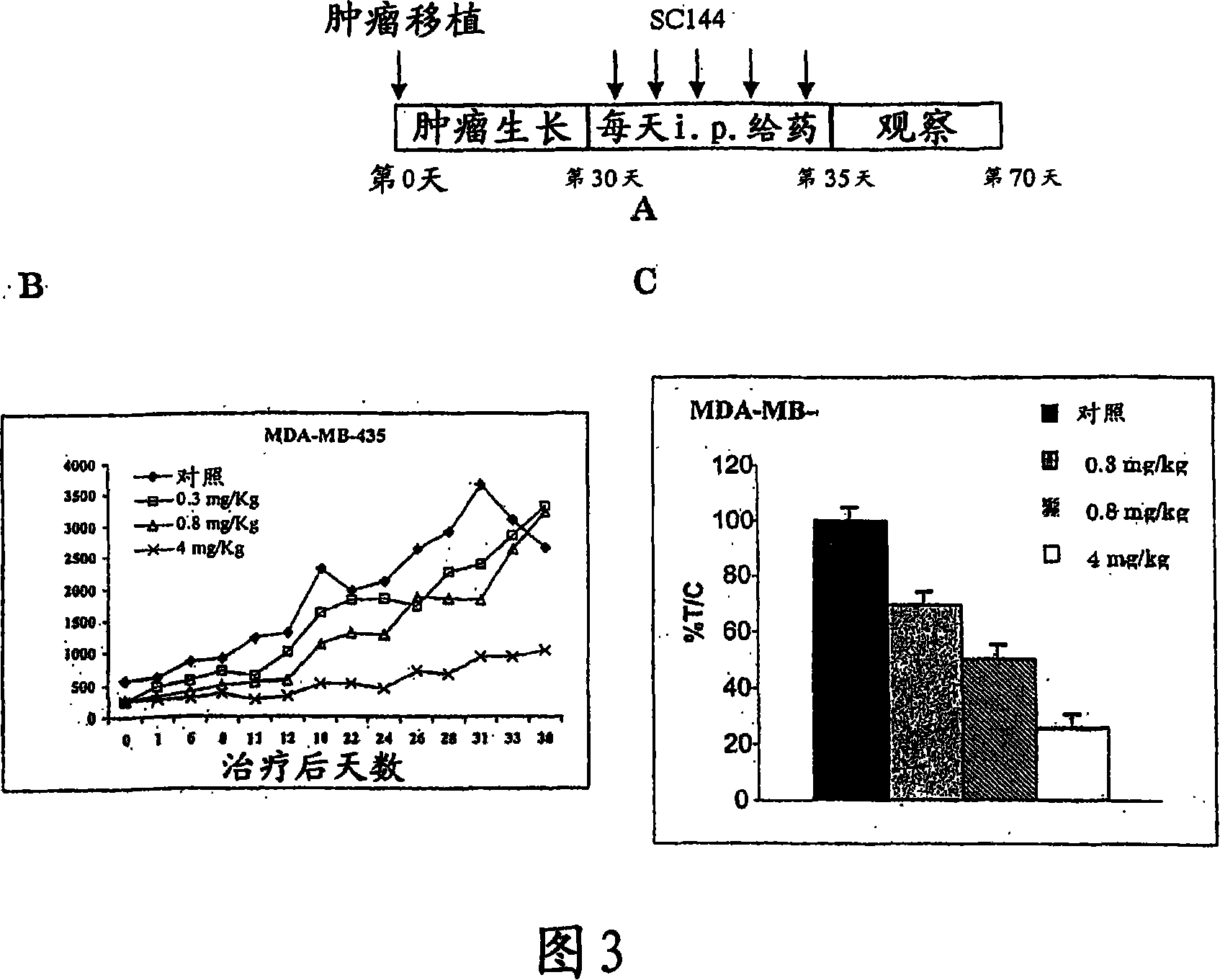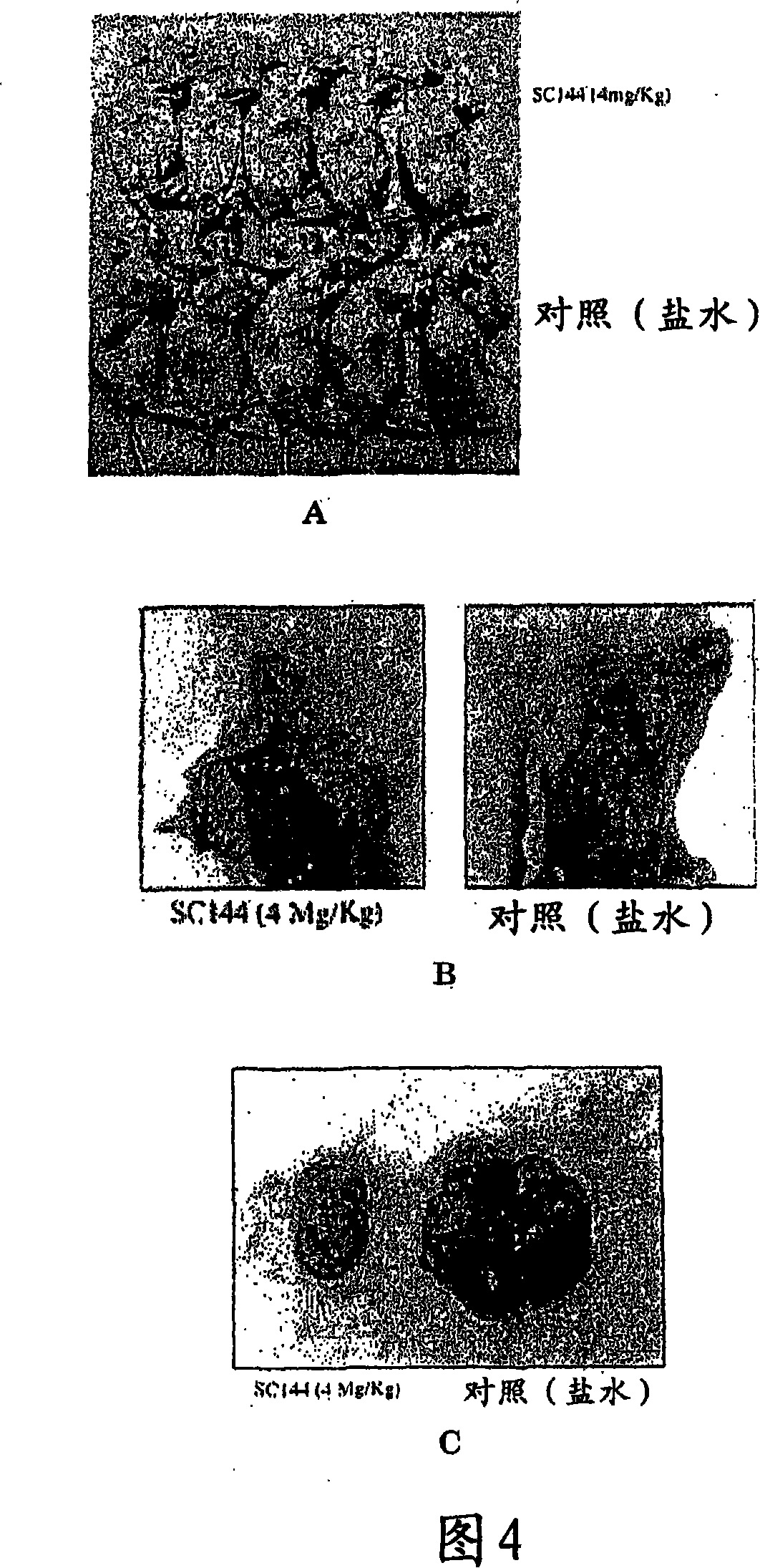Novel compounds for treatment of cancer and disorders associated with angiogenesis function
A compound, alkyl technology, applied in the direction of active ingredients, applications, biocides, etc. of heterocyclic compounds, which can solve problems such as troublesome and time-consuming
- Summary
- Abstract
- Description
- Claims
- Application Information
AI Technical Summary
Problems solved by technology
Method used
Image
Examples
preparation example Construction
[0142] The double derivative SC147 was prepared by the direct reaction of hydrazine monohydrate with two molar equivalents of ethyl pyrrolo[1,2-a]quinoline-4-carboxylate 15 as described in Nagarajan et al. ((1972) Indian J.Chem.10:344-350) (Scheme 2) and then obtained sequentially.
[0143] Scenario 2
[0144]
[0145] In EDC / DMAP followed by TFA and anisole in the presence of Base) propionic acid, Boc-3-amino-3-(4-fluorophenyl)propionic acid, Boc-3-amino-3-(4-cyanophenyl)propionic acid, Boc-3-amino-3-( Reaction of 4-methoxyphenyl)propanoic acid with Boc-3-amino-3-(4-trifluoromethylphenyl)propanoic acid can give SC160, SC161, SC162, SC163, SC164 and SC165 (Scheme 3).
[0146]
[0147] In the presence of EDC / DMAP followed by TFA and anisole, SC166, SC167, SC168, SC169, SC170, SC171 and SC172 can be obtained by reacting 14a with the corresponding acids (15a-g) shown in Scheme 4, respectively (Scheme 4 ).
[0148]
[0149] SC173 can be obtained by reacting 14a with 2...
Embodiment I
[0209] Chemical
[0210] All reactions were performed under nitrogen atmosphere. Through silica gel plate TLC (Merck 60, F 254 , 0.2mm) to monitor the progress of the reaction. with MgSO 4 The organic solution was dried; evaporation meant removal of solvent on a rotary evaporator under reduced pressure. Melting points were determined using a Gallenkamp apparatus and were not corrected. IR spectra were recorded from thin films on a Perkin-Elmer 398 and FT 1600 spectrophotometer. Recorded on a Brüker 300-MHz spectrometer using TMS as internal standard 1 H NMR spectra; chemical shifts are expressed in [delta] values (ppm) and coupling constants in (J) Hz. Mass spectrometric data were determined by forward insertion at 70 eV using a VG70 spectrometer. Merck silica gel (Kieselgel 60 / 230-400 mesh) was used as a flash chromatography column. Elemental analysis was performed on a Perkin-Elmer 240C elemental analyzer, and the results were within ±0.4% of theoretical values. Y...
Embodiment II
[0275] We created a database of 10,000 reported and patented integrase inhibitor compounds, which in some cases may target additional DNA processing enzymes even more potent than integrase. Using this database, we developed various pharmacophore models, followed by toxicity prediction using the ADMET Predictor software package (Simulations Plus, Inc., Lancaster, CA) and cluster analysis to group most antiviral compounds with cytotoxic compounds. separate. Based on these pharmacophore models, the salicylhydrazides we identified as possible lead compounds were included in our anticancer drug discovery program. To continue developing this class of compounds, we searched our internal multiconformation database of ~4500,000 compounds and identified >2,200 compounds that share common structural features and pharmacophore fragments. We then obtained 950 analogs from commercial sources and preliminarily screened them by 3-(4,5-dimethylthiazol-2-yl)-2,5-diphenyltetrazolium bromide-cyt...
PUM
 Login to View More
Login to View More Abstract
Description
Claims
Application Information
 Login to View More
Login to View More - Generate Ideas
- Intellectual Property
- Life Sciences
- Materials
- Tech Scout
- Unparalleled Data Quality
- Higher Quality Content
- 60% Fewer Hallucinations
Browse by: Latest US Patents, China's latest patents, Technical Efficacy Thesaurus, Application Domain, Technology Topic, Popular Technical Reports.
© 2025 PatSnap. All rights reserved.Legal|Privacy policy|Modern Slavery Act Transparency Statement|Sitemap|About US| Contact US: help@patsnap.com



